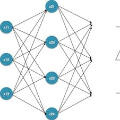By attaching auxiliary event times to the chronologically ordered observations, we formulate the Bayesian multiple changepoint problem of discrete-time observations into that of continuous-time ones. A version of forward-filtering backward-sampling (FFBS) algorithm is proposed for the simulation of changepoints within a collapsed Gibbs sampling scheme. Ideally, both the computational cost and memory cost of the FFBS algorithm can be quadratically scaled down to the number of changepoints, instead of the number of observations, which is otherwise prohibitive for a long sequence of observations. The new formulation allows the number of changepoints accrue unboundedly upon the arrivals of new data. Also, a time-varying changepoint recurrence rate across different segments is assumed to characterize diverse scales of run lengths of changepoints. We then suggest a continuous-time Viterbi algorithm for obtaining the Maximum A Posteriori (MAP) estimates of changepoints. We demonstrate the methods through simulation studies and real data analysis.
翻译:通过将附带事件时间与按时间顺序排列的观测相挂钩,我们将贝叶西亚不同时间观测的多位变化点问题写成连续时间观测问题。为模拟崩溃的Gibs抽样计划内的变化点,建议采用前过滤后下取样算法(FFBS)的版本。理想的情况是,FFBS算法的计算成本和内存成本可以按四舍五入比例缩到变化点数目,而不是观察次数,否则对长期观测来说是令人望而却步的。新配方允许在新数据到达时不固定地累积变化点的数目。此外,假设不同部分的时序变化点复发率将具有变化点长度的不同特征。我们然后建议采用连续的Viterbi算法,以获得最大后台(MAP)对变化点的估计。我们通过模拟研究和真实数据分析来展示这些方法。



